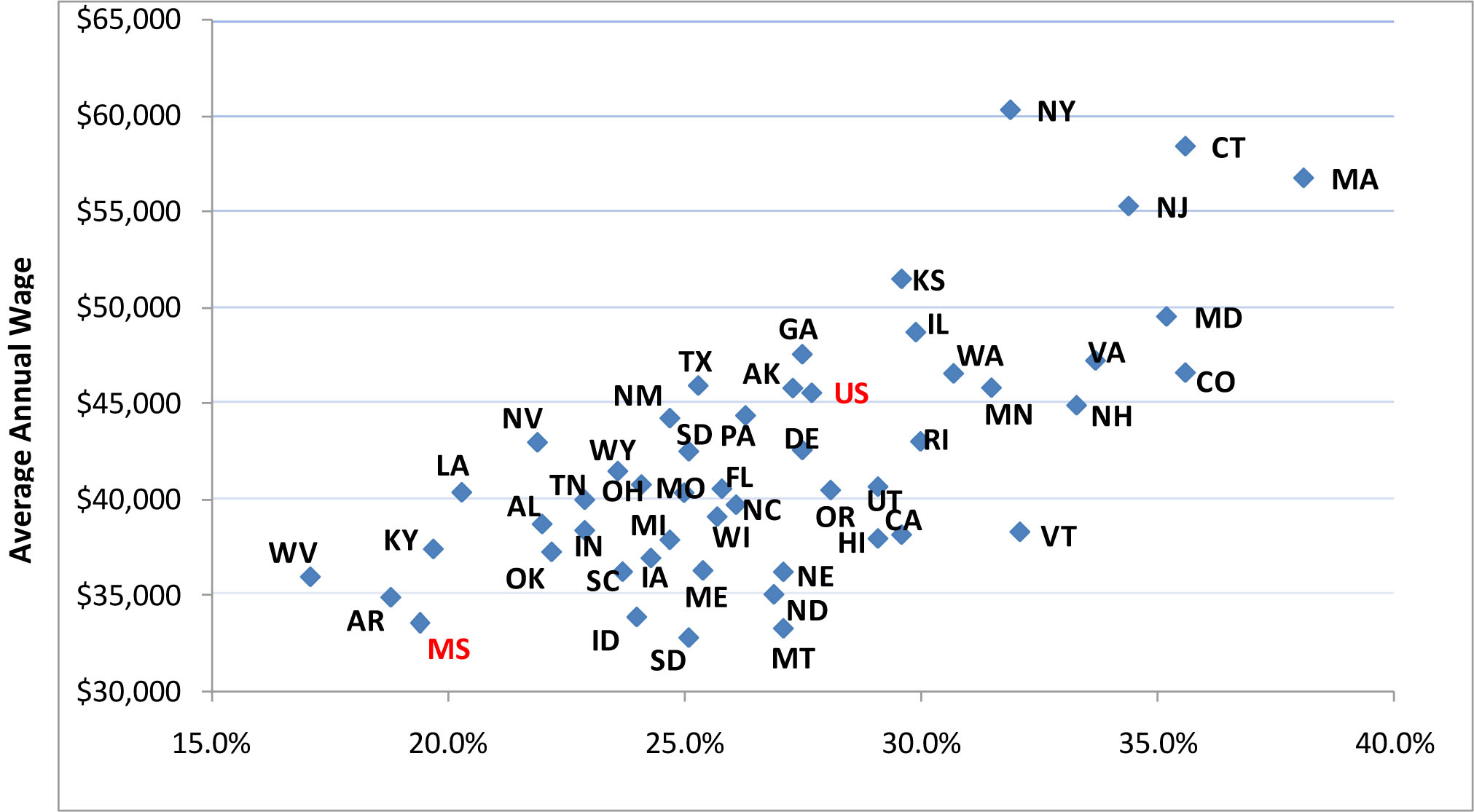Education and Prosperity for Mississippi’s Working Families Threatened
March 22nd, 2011
With the legislative session now focused on appropriations and revenue bills, education funding has once again moved to the forefront of the debate. In the absence of additional revenue, the funding formula for K-12 education will likely be underfunded by over $200 for the second year in a row. Likewise, funding levels for the community colleges and universities will be well short of what is needed. In developing a strategy to fund education at all levels, a long-term view on the benefits of educational attainment is instructive.
There is a well-documented relationship between educational attainment and wages among the states. In the figure below, each state is shown at the point that their educational attainment and wage data intersect. As educational attainment increases, average annual wages increase as well.
Click to enlarge
Educational Attainment and Average Annual Wages by State in 2008
Mississippi’s average annual wage was $33,508 and 19.4 percent of persons over 25 in Mississippi had bachelor’s degrees in 2008 (both are the third lowest among states). Mississippi has made gains in educational attainment over the last two decades. The percent of persons over 25 with a bachelor’s degree has increased from 14.7 percent to 19.4 percent.
Progress must continue. As wages increase, people spend more and generate more revenue for important public structures – like education. Both the House and Senate have voted to support a level of education funding next year similar to this year. In previous blog posts, the Hope Policy Institute (formerly the Mississippi Economic Policy Center, or MEPC) has pointed out that level funding is not full funding. With the long-term wage implications for falling short on education, full funding of MAEP should be a top priority in the state’s economic development strategy.
Source:
MEPC analysis of data from the U.S. Census Bureau and U.S. Bureau of Labor Statistics







